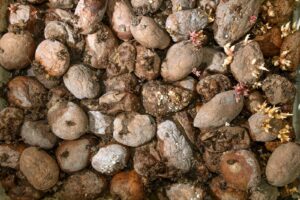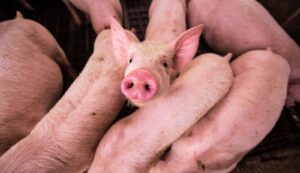Are Christmas jumpers bad for the environment?
It’s that time of the year again – rightly or wrongly – when everyone buys a Christmas jumper.
For many, it’s just a harmless bit of fun, which helps you get into the party spirit, but what are the environmental implications for buying a garment that will go straight to the back of the cupboard in the New Year?
Environment Journal spoke to sustainable clothing manufacturer Tom Cridland (pictured) about the true cost of that festive party/zoom call must-have.
EJ: The festive season has become closely associated with Christmas jumpers, but is it environmentally friendly to buy an item of clothing that might be worn only once or twice?
 Tom Cridland (TC): ‘It definitely isn’t. Fashion landfill is a major problem, exacerbated by fast fashion. This year, they believe 18.6 million tonnes of clothing will have ended up in a landfill. The Ellen Macarthur Foundation said that if this trend continues, over 150 million tonnes of clothing waste will clog landfills by 2050. Buying something that you’re not going to treasure is not only an inefficient way of spending your money and looking good, it is also bad for the environment.’
Tom Cridland (TC): ‘It definitely isn’t. Fashion landfill is a major problem, exacerbated by fast fashion. This year, they believe 18.6 million tonnes of clothing will have ended up in a landfill. The Ellen Macarthur Foundation said that if this trend continues, over 150 million tonnes of clothing waste will clog landfills by 2050. Buying something that you’re not going to treasure is not only an inefficient way of spending your money and looking good, it is also bad for the environment.’
EJ: Are many of the festive jumpers on the market being produced in an ethical and environmentally-friendly manner?
TC: ‘The majority of them are poorly produced, deliberately naff and sold by fast fashion retailers for next to nothing. A lot of the time they’ll have been made by people who weren’t even paid a fair living wage.’
EJ: What kind of impact does ‘fast fashion’ have on the environment?
TC: ‘Fast fashion has a disastrous impact on the environment because this is the phenomenon that has caused to “buy something, wear it once, throw it away” mentality to become so prevalent. We waste natural resources producing entirely unnecessary quantities of cheap clothing and then fill up landfill with the garments that have hardly been worn.’
EJ: How long do consumers need to keep wearing garments for them to become less damaging to the environment?
TC: ‘Ideally as a long as possible. In reality, producing anything is not exactly sustainable but I am a firm believer in conscious capitalism. A strong economy will help us beat climate change. There is no reason why we can’t adopt more sustainable business and consumer practices, whilst still aiming to make a healthy profit.’
EJ: How important is it to buy items of clothing that are locally produced, relatively speaking?
TC: ‘It is definitely more sustainable if the carbon footprint of the supply chain is minimised as much as possible. If a brand is based in Britain, for example, it is definitely better if they produce their clothing there too. That is why I moved Tom Cridland production from Portugal, which I chose because I am half Portuguese, to the UK, where our other business operations are based.’

EJ: Tell us about the festive sweatshirt you have produced (pictured) and why it is guaranteed to last 30 Christmases?
TC: ‘The 30 Year Christmas Sweatshirt is made so well we guarantee it to last for three decades of Christmases. We are encouraging you to treasure your Christmas jumper along with the memories you make while wearing it. It is made out of organic and recycled materials, with reinforced sleeve seams. If anything happens to the sweatshirt within the 30-year period, we repair or replace it free of charge.’
And finally, what is your sustainability hope for the New Year?
TC: ‘For more scientifically and technologically minded politicians to emerge, so that the focus of our current affairs can pivot towards innovations that might actually help humanity fight things like climate change, rather than constantly dividing and polarising our society.’
Photo Credit – StockSnap (Pixabay)/Supplied















